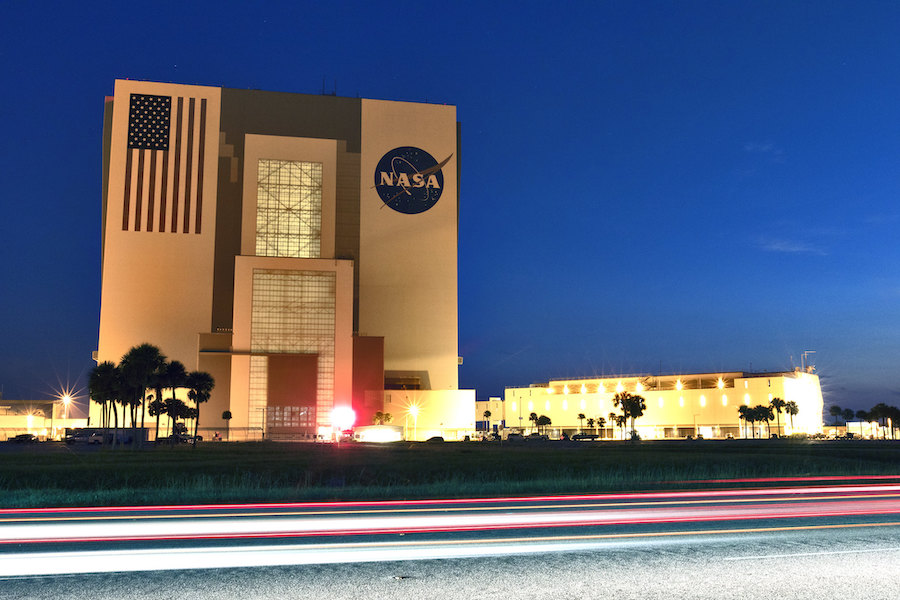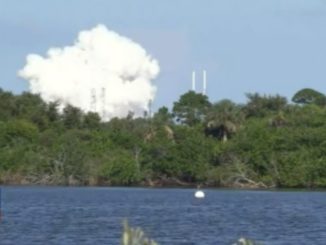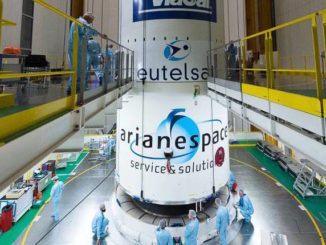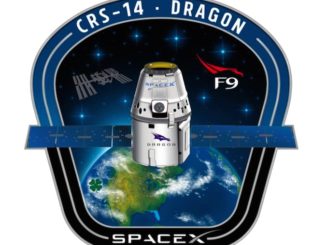
All NASA centers and facilities will begin a mandatory telework policy for agency and contractor employees effective immediately, except for “mission-essential” personnel, to combat the threat from the coronavirus pandemic, officials announced Tuesday.
NASA Administrator Jim Bridenstine said in a statement Tuesday that the agency’s leadership decided to elevate all NASA centers to Stage 3 of NASA’s Response Framework.
“Effective immediately, all employees and contractors will move to mandatory telework until further notice,” Bridenstine said in a written statement. “Mission-essential personnel will continue to be granted access onsite. Please contact your supervisor as soon as possible if you have any questions.”
Some NASA facilities, such as Ames Research Center in California and Marshall Space Flight Center in Alabama, transitioned to Stage 3 operations and instituted mandatory telework orders for non-essential personnel after employees there tested positive for the COVID-19 coronavirus.
Earlier this week, the director of NASA’s Michoud Assembly Facility in New Orleans introduced mandatory telework for non-essential workers. Robert Champion, Michoud’s director, said in a statement Monday that no workers at Michoud have tested positive for the viral disease, but he ordered the change because more than 100 cases of COVID-19 were confirmed in the local area.
“Access to the facility will be restricted to mission-essential personnel only, as defined in the response framework and by your company leadership,” Champion said in a statement.
Michoud is home to production of core stages for NASA’s Space Launch System heavy-lift rocket. Some work on NASA’s Orion crew capsule and Northrop Grumman’s planned OmegA launch vehicle is also based at Michoud.
Officials at NASA’s Jet Propulsion Laboratory in Pasadena, California, where many of the agency’s interplanetary robotic missions are built and controlled, announced Monday that only non-essential workers there would be allowed access to the facility.
NASA Headquarters expanded the Stage 3 status agency-wide Tuesday.
“Although a limited amount of (NASA) employees have tested positive for COVID-19, it is imperative that we take this pre-emptive step to thwart further spreading of the virus among the workforce and our communities,” Bridenstine said.
According to NASA’s Response Framework, the agency defines mission-essential activities as:
- Work that must be performed to maintain mission/project operations or schedules AND cannot be performed remotely/virtually;
- OR work that has a justifiable impact on the safety of human life or the protection of property, AND there is a reasonable likelihood that the safety of human life or the protection of property would be compromised by a delay in the performance of the work.
It’s unclear how the coronavirus pandemic will impact launch activities at U.S. spaceports. SpaceX was proceeding with a planned Falcon 9 rocket launch from the Kennedy Space Center in Florida on Wednesday morning carrying 60 of the company’s Starlink Internet satellites into orbit.
NASA officials have said they are prioritizing work to prepare missions for launch that have tight planetary windows, such as the Perseverance Mars rover scheduled for liftoff from Cape Canaveral in July. The Mars rover is at the Kennedy Space Center undergoing final testing and launch preparations.
NASA astronauts Doug Hurley and Bob Behnken continue training for launch as soon as May on the first piloted test flight of SpaceX’s Crew Dragon spaceship to the International Space Station.
In Stage 3 of NASA’s Response Framework, only mission-essential travel is permitted.
In the event NASA leadership elevates agency facilities to Stage 4, centers would be closed to all personnel except workers required to “protect life and critical infrastructure,” and all travel would be suspended.
“Agency leadership will continue to monitor the rapidly-evolving risks COVID-19 poses to our workforce,” Bridenstine said in a statement to NASA employees. You should anticipate continued frequent communication from your center director, myself and others. Up-to-date agency announcements and guidelines are available on the NASA People website, please check it often.
“NASA’s early and thoughtful actions in coordination with our country’s unified response to this health emergency is an incredible display of national solidarity,” Bridenstine said. “Thank you for your vigilance and flexibility. I am confident your diligence and commitment will ensure our mission will continue. Please make certain you are giving the appropriate attention to your health and that of your family.”
Email the author.
Follow Stephen Clark on Twitter: @StephenClark1.



